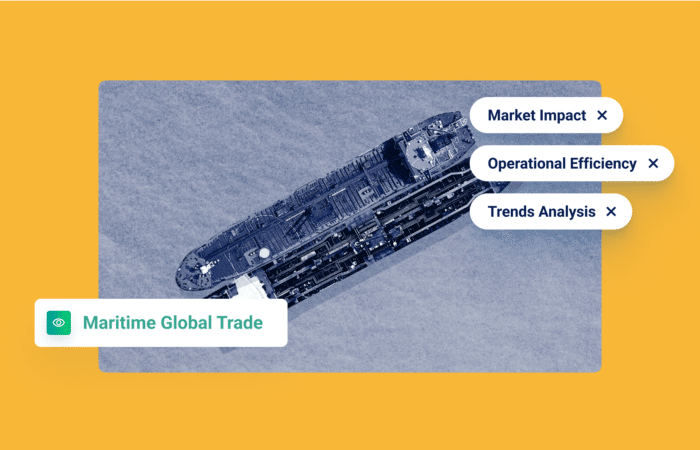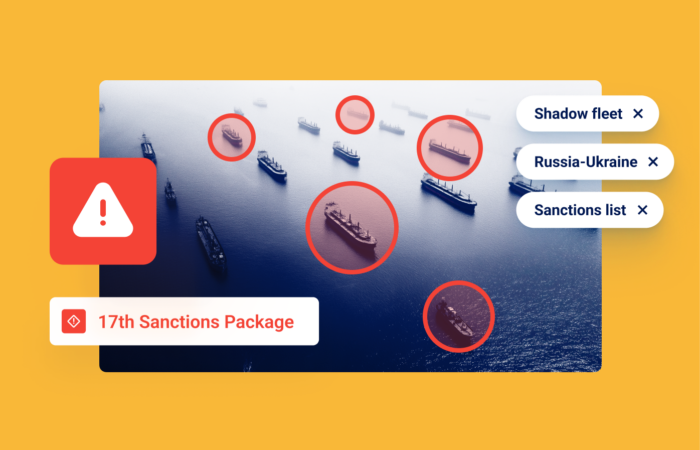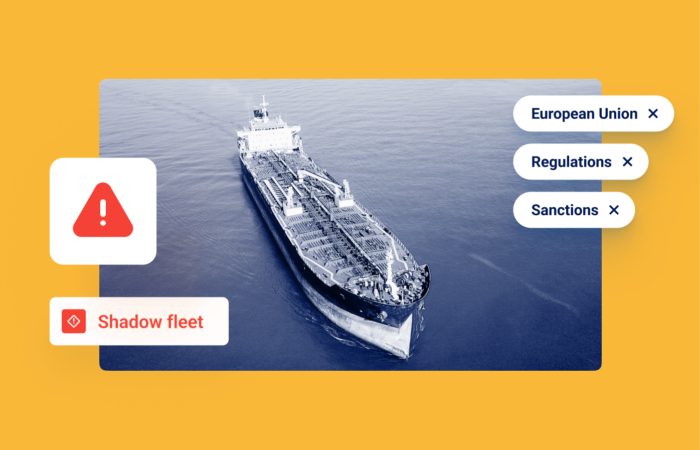How to mitigate trade finance risks with maritime insights

What’s inside?
Can you pinpoint what your maritime risk exposure is? For most banks, this is a common blind spot. In a 4-part masterclass hosted by VRS, Tim Aquino, a Solutions Expert at Windward, sat down with Oonagh van den Berg and other industry experts to discuss how maritime insights can be the critical link to staying ahead of financial crime and sanctions.
The maritime factor
Maritime is often not the first place that trade finance teams think to look for risk management. But as Tim explained, “if you’re involved in international trade, you’re very likely involved in maritime risk exposure.” And it can be easily understood in numbers. There are 100,000 vessels involved in commercial trade (which includes containerized goods and wet cargo). And with that, there are any number of vessel activities and companies at play that impact both sanctions and financial risks.
So when it comes to the due diligence of a vessel, it’s not just about the vessel itself but who is pulling the strings behind the scenes. Take, for instance, the fact that there are seven entities linked to one vessel. This means that the UBO, the technical manager, the charterer — every party needs to be screened and accounted for.
What do the numbers say?
Our system revealed that around 8,000 companies show compliance risk that matching tools don’t pick up on. And these 8,000 companies carry the risk of an industry that transports around 90% of global trade. And when considering the 100,000 vessels involved in any given trade transaction, there are around 7,000 vessels that are not sanctioned but do carry some sort of risk. According to our data, we alerted our customers of high-risk vessels an average of 600 days before their sanction date.
Below is a checklist of some of the must-haves for proactive and effective risk management:
- Assign the right entity, company, or vessel, to the relevant maritime operations
- If an entity has maritime exposure, provide clearance recommendations based on a variety of typologies, including sanctions, AML (i.e drug smuggling, forced labor, etc.) and fraud
- Support investigative teams with insights to minimize time-to-decision on clearances/escalations
- Identify risk at the pre-designation level
Automation for the win
When it comes to documentary trade, there are unique considerations. “In trade finance, there are critical moments, and there are critical documents,” describes Tim. When considering bills of lading (BOL), the challenge of detecting risk isn’t any less. Bad actors can easily change or misrepresent the value, number, or even type of goods. If banks cannot correctly determine if goods are under or overvalued, it’s their reputation on the line. We help our banking customers manage this risk by leveraging data at the vessel and container level.
Our machine learning models verify the data on the BOL versus real-time behavioral data to determine if the shipment actually occurred and that it was legitimate. We can determine what is happening on the ground, in real-time and historically. So if in a lookback period, banks can justify and say, yes, I can say that this shipment occurred. And while it may seem like a given, this is currently a real challenge.
BOL verification is done mostly manually today, and bad actors leverage this to their advantage.
Technology can help in the following ways:
- Identification and assignment of the digital entities associated with the information mentioned in letters of credit and bills of lading
- Risk insights on the existence of cargo, its origin, and the true identity and purpose of associated parties
- Risk insights on the owners and all related parties associated with the cargo and its shipping
Want to learn more?
This masterclass was an important step in knowledge sharing amongst the industry, which is starting to wrap its head around the increasing regulatory environment and beginning to calculate their exposure. Students who participated received a certificate of completion from VRS to demonstrate their initiative to keep pace with the constantly changing tactics, regulations, and solutions. More masterclasses are coming soon.











